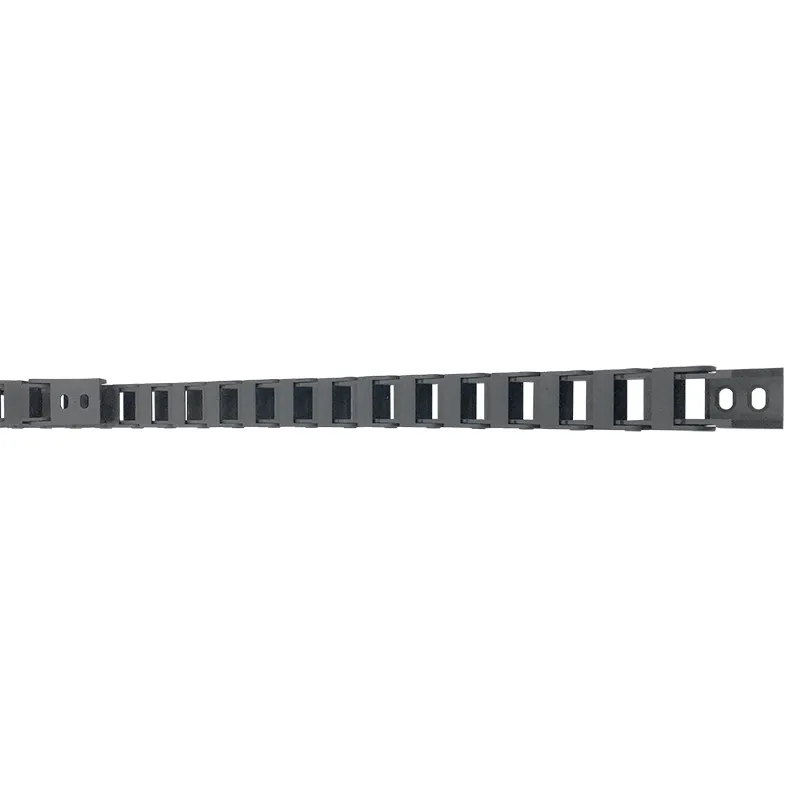cnc cable carrier
Understanding CNC Cable Carriers Essential Components for Smooth Operations
CNC (Computer Numerical Control) machines are revolutionizing the manufacturing sector by enhancing precision, efficiency, and automation. A critical component that often goes unnoticed in these systems is the cable carrier, also known as a drag chain, which plays a vital role in protecting and organizing the cables and hoses that provide power and control to the CNC machine. In this article, we will delve into the significance, types, and benefits of CNC cable carriers.
What is a Cable Carrier?
A cable carrier is a flexible, protective channel that guides and supports cables and hoses as they move with the machine. It serves several purposes, from reducing wear and tear on cables to preventing tangling and enhancing mobility. These carriers are essential in CNC applications where movement is continuous, with cables needing to flex and bend without sustaining damage.
Significance in CNC Machining
The operational efficiency of CNC machines heavily relies on the uninterrupted and reliable functioning of electrical and hydraulic systems. Without proper organization and protection of cables, issues such as friction, abrasion, and entanglement can arise, leading to equipment failure and costly downtimes. Cable carriers provide a structured pathway for cables, mitigating these risks effectively.
Types of CNC Cable Carriers
1. Plastic Cable Carriers These are lightweight, versatile, and highly resistant to chemicals and environmental conditions. They are often utilized in lighter CNC machines and applications where cost-effectiveness is paramount.
2. Steel Cable Carriers Known for their robustness and durability, steel carriers are used in heavy-duty CNC applications. These carriers can withstand extreme conditions and are resistant to a range of hazardous environments.
3. Aluminum Cable Carriers Offering a mix of lightweight properties and strength, aluminum carriers are used in applications that require both mobility and robustness. They tend to be more expensive but are a preferred choice for advanced CNC systems.
cnc cable carrier

4. Specialized Cable Carriers Some manufacturers offer customized solutions tailored to specific industry needs. These can include features like modular designs, integrated energy supply systems, and different size options.
Benefits of Using CNC Cable Carriers
1. Enhanced Cable Life By providing a controlled environment for cables, cable carriers reduce the wear and tear that would otherwise occur due to bending and dragging along surfaces. This leads to longer cable life and reduced replacement costs.
2. Increased Efficiency Organized cables mean that maintenance is easier and quicker. When systems are laid out neatly, it enhances overall operational flow and reduces downtime.
3. Safety Improvements By securely housing cables, the risk of tripping or snagging is dramatically lowered. This not only protects equipment but also enhances workplace safety for operators.
4. Flexibility and Mobility Cable carriers are designed to maximize flexibility, accommodating extensive ranges of motion while ensuring that cables remain intact and functional. This is particularly useful in CNC machines that undergo multiple axes of movement.
5. Cost-Effectiveness While the initial investment in high-quality cable carriers might seem substantial, the long-term cost savings through reduced maintenance, lower downtime, and fewer cable replacements often justify the expense.
Conclusion
In the landscape of CNC machinery, every component plays a crucial role in ensuring optimal performance. Cable carriers are no exception, providing necessary support, protection, and efficiency for the cables that power these advanced machines. By understanding the various types and their benefits, manufacturers can make informed decisions to enhance the longevity and functionality of their CNC operations. Investing in appropriate cable carriers not only contributes to the reliability of CNC machines but also paves the way for more streamlined and safe manufacturing processes. As technology continues to advance, the role of cable carriers in CNC applications will only become more significant, underscoring the need for careful consideration in their selection and implementation.








